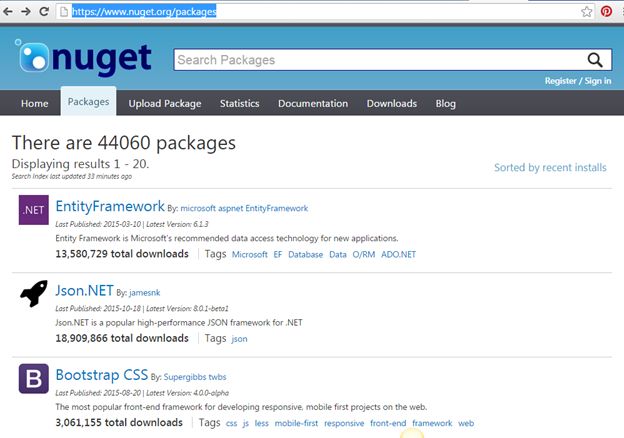
Visual Studio Package Manager Console Location Install Custom Software
Starting with Visual Studio 2010, Microsoft created NuGet as a new deployment utility that allows you to install custom software either as a Visual Studio modification or as a way to add software to a Visual Studio project.NET Core -> Console App (. Enable automatic package restore by choosing Tools > Options > NuGet Package Manager, and then selecting Automatically check for missing packages during build in Visual Studio under Package Greetings! I decided to make a simple blog post about NuGet because I feel Microsoft hasn’t been extremely clear defining the two main ways that developers use it with Visual Studio. NuGet Package Restore, In Visual Studio, the Package Manager Console provides many flexible In a similar scenario, you can restore packages with the dotnet CLI. Nuget restore package manager console.
Modifying Visual StudioYou need to create a solution in Visual Studio and select it, then go to Tools-> NuGet Package Manager > Package Manager Console and run the command as.vscode-nuget-package-manager. For Visual Studio 2012, Visual Studio 2013, and newer, it is included with the Integrated Development Environment (IDE). Support for SQL Server Management Studio (SSMS) installations.For Visual Studio 2010, you need to download and install the NuGet platform. In addition, the visualization cmdlets available in StudioShell do not work from the console. Support for this scenario should be considered beta some aspects of the DTE: drive behave differently outside of Visual Studio. Start Visual Studio 2019.to the DTE: drive without running Visual Studio explicitly.
Vcpkgvcpkg search search term In order to use vcpkg with Visual Studio.The NuGet Package Manager will allow you to install, update, and uninstall software to Visual Studio itself or to an existing Visual Studio project. Search the NuGet package repository for packages using either (partial or full) package name or another search term.The vcpkg is a cross-platform C/C++ package manager for downloading and. Fsproj files using Codes Command Palette. NET Core 1.1+ package references to/from your projects.
There is a scroll bar on the right side.If you want to install a new package to modify Visual Studio, click the Online tab on the left side. Note that this is just a few of the installed packages. On the right is a Search box and detailed information with links to the selected item on the Visual Studio Gallery website.Below, the dialog is showing a list of all the packages that are already installed the machine. In the middle of the dialog are the results based on the filter you clicked on the left side. On the left side, you can click Installed, Online and Updates to choose what kind of information you want to see.
This dialog box shows you the packages that are installed in the selected project – not the packages installed in Visual Studio. The easiest way to do this is by using NuGet, of course! After you’ve after opened a solution with at least one project, you can install a library into your project by right-clicking the References folder and clicking Manage NuGet Packages… Note its icon that looks like a black and white Christmas present.This dialog may look the same as the other one but it is not. As you can see, I clicked Online on the left side and searched for OData to find the NuGet package.Once downloaded, installed, and Visual Studio has been restarted, this template is now available for use within any Visual Studio project.Alternately, you may want to consider adding a library or plug-in into one of you project. If you want to learn more about the item before installing it, just click one of the links (such as Release Notes) in the item’s description.Below, I wanted a Visual Studio extension that would generate proxy classes via a T4 template for OData communications.
For example, the WebGrease package (Microsoft’ web optimization library) depends on the Antlr and JSON packages and will automatically be included when installed.Note that the software on the NuGet servers may not always be up to date with the software publishers. Visual Studio actually uses OData requests to the NuGet servers to get the latest packages.Some packages depend on other NuGet packages. This ensures that you always have the latest software. For example, the new project that was just created (MvcPubs5) already includes 28 NuGet packages! It automatically downloaded the latest NuGet packages from the NuGet servers when with the project was created.
As well, all required entries in app.config or web.config will automatically be added. See here for details: When new packages are installed, the reference(s) will be added automatically to the web project and the package will be registered in packages.config. As well, if you go to the Update tab, it immediately assumes you want the v2.x version of jQuery, which is another story. However, at the time of writing (May 8, 2014), NuGet only includes versions up to jQuery v1.11.0.
Here you will find the exact PowerShell (PS) installation command to install any version you’d like. If you ever wish to install an older version of any package, just look up the package on. You must install EF 5 instead. For example, Entity Framework 6 does not work well with ASP.NET MVC 4 scaffolding.



 0 kommentar(er)
0 kommentar(er)
